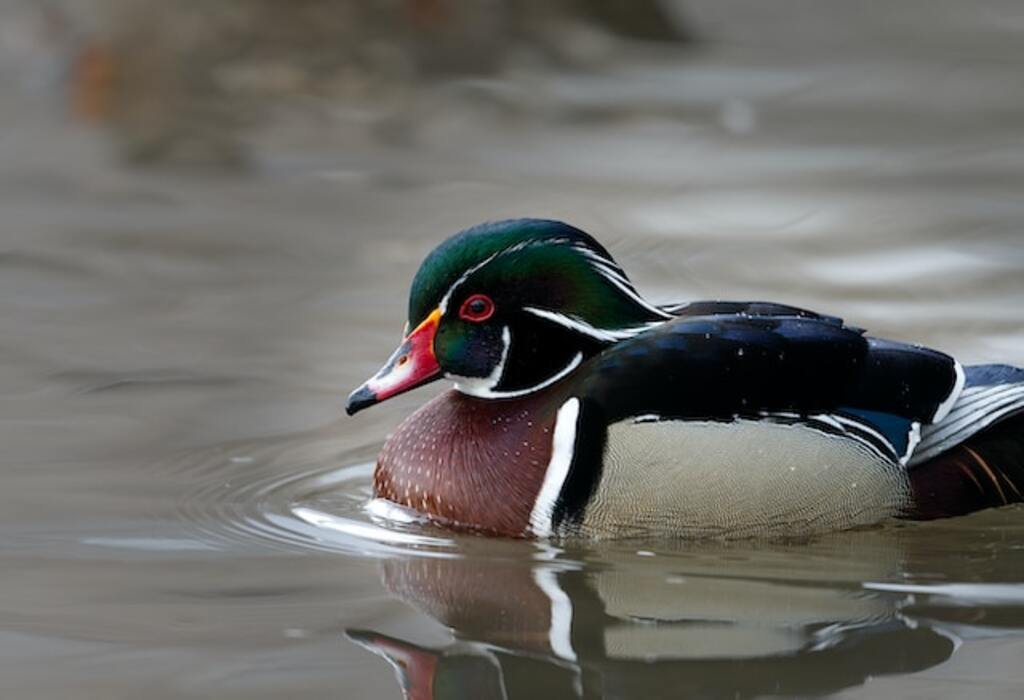Blinking is a common behavior among many different species, including humans, primates, and even birds. Blinking serves a variety of purposes, from protecting the eyes from harmful environmental factors to moisturizing the cornea and reducing dryness.
Despite its widespread occurrence across different animal groups, however, the specific behavior of blinking can vary greatly between species.
In this article, we will explore the fascinating world of avian eye behavior and answer the question: do birds blink? We will begin by defining what blinking is and providing an overview of bird anatomy and behavior.
Table of Contents
- 1 Do Birds Blink?
- 2 Why Do Birds Blink?
- 3 Blinking in Different Bird Species
- 4 Conclusion
- 5 References
- 6 FAQs: Do Birds Blink?
- 6.1 Do birds blink their eyes?
- 6.2 How often do birds blink?
- 6.3 Why do birds blink so frequently?
- 6.4 Can birds close their eyes completely when they sleep?
- 6.5 What is a nictitating membrane?
- 6.6 How does a bird’s nictitating membrane work?
- 6.7 Can birds control the movement of their nictitating membrane?
- 6.8 Do all birds have a nictitating membrane?
- 6.9 Can you see a bird’s nictitating membrane?
- 6.10 Are there any other animals with a nictitating membrane?
- 7 Author
Definition of Blinking
Blinking refers to the act of briefly closing one’s eyes and then reopening them shortly thereafter. Humans typically blink around 10–15 times per minute on average, although this rate can vary depending on factors such as age, fatigue level, or emotional state.
During a blink, muscles in the eyelid contract to close off the eye temporarily before relaxing again to allow vision to resume.
While blinking might seem like a simple reflexive behavior at first glance, it actually serves several important functions for visual health.
For example, blinking helps to spread tears across the surface of the eye to keep it moist and lubricated. It also protects against external irritants such as dust or debris by flushing them out before they can cause damage.
Overview of Bird Anatomy and Behavior
Birds are an incredibly diverse group, with over 18,000 species worldwide. They range in size from tiny hummingbirds weighing just a few grams to giant ostriches standing over 6 feet tall.
Despite their many differences in appearance and ecology, all birds share several key anatomical features that help facilitate flight.
One important adaptation for flight is their lightweight, yet strong bones. Unlike most mammals, birds have a highly specialized respiratory system that allows for efficient gas exchange during flight.
They also possess unique feathers that help to insulate and streamline their bodies, making them more aerodynamic.
In terms of behavior, birds are known for their complex vocalizations and elaborate courtship displays.
Many species also exhibit fascinating migratory patterns, traveling thousands of miles each year to reach their breeding or wintering grounds.
With such a rich diversity of behaviors and adaptations, it’s no surprise that the eyes and vision systems of birds are just as intriguing.
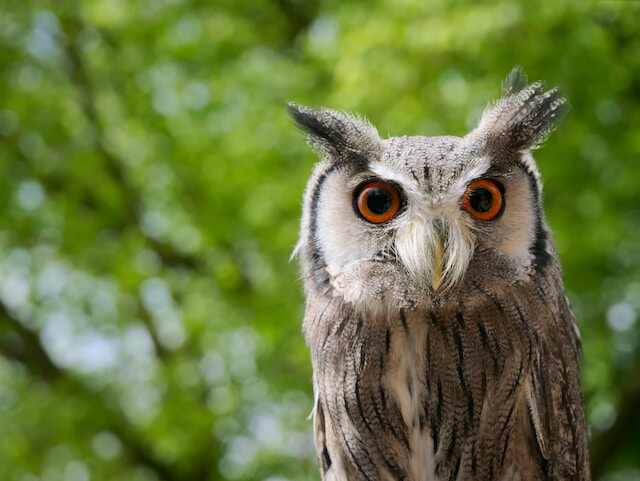
Do Birds Blink?
The Avian Eye Structure
Birds, like humans, have complex visual systems that allow them to navigate their environment and find food. However, the structure of their eyes is quite different from ours.
The avian eye has a large cornea relative to its eye size, providing a wider field of vision and better visual acuity than humans.
They also have a flattened lens that can be moved back and forth in order to adjust focus, instead of changing shape like in human eyes. One particularly interesting feature of the avian eye is the pecten.
This is a unique organ found in birds that helps provide nourishment to the retina. It is thought that this may contribute to birds’ superior visual acuity compared to mammals.
Comparison to Human Eye Structure
While there are many similarities between bird and human eyes, there are also some notable differences. For example, avian eyes lack both tear ducts and eyelids as we know them.
Instead of closing their eyes with eyelids like humans do when blinking or sleeping, birds use a nictitating membrane – an extra eyelid-like structure – which moves horizontally across the surface of the eye.
Birds also have more cone cells (used for color vision) than humans do, allowing them to see a wider range of colors than we can.
Research on Bird Blinking Behavior
Despite these differences in eye structure, birds do blink just like humans do. However, research on bird blinking behavior is limited compared to studies on human blinking behavior.
Some initial studies suggest that birds blink less frequently than mammals – around once every few minutes for most species.
This may be due in part to their lack of eyelids; without the ability to close their eyes fully when they blink, it may not be as effective at removing debris or lubricating the eye.
Interestingly, some species of birds have been observed to blink with only one eye at a time – a behavior that is not seen in mammals.
This may be due to the nictitating membrane being so effective at protecting and lubricating the eye that it is not necessary to close both eyes at once.
Overall, while there is still much we don’t know about bird blinking behavior, it is clear that these feathered creatures have fascinating visual systems that deserve further study.
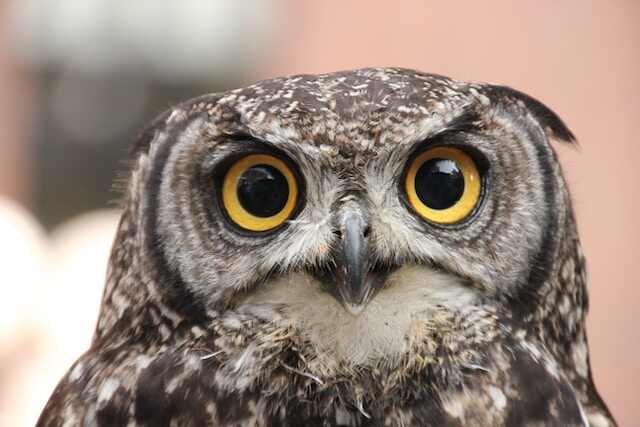
Why Do Birds Blink?
Blinking is an essential trait for both human beings and birds. However, unlike humans, birds have a third eyelid, commonly referred to as a nictitating membrane.
The primary purpose of the nictitating membrane in birds is to provide extra protection to their eyes.
Blinking in birds serves several critical functions that are essential for their survival, including protection from environmental factors such as wind, dust, debris, bright light and UV radiation.
Protection from environmental factors
Wind, dust and debris can cause significant damage to a bird’s eyes if left unprotected. The nictitating membrane helps keep the eyes clean by removing any dirt or debris that may enter them.
Additionally, the membrane protects against strong wind currents that can cause corneal abrasions or irritation.
Bright light and UV radiation pose significant risks to bird’s health because they can damage their cornea or retina.
Birds’ eyes are much more sensitive than humans’, so exposure to sunlight must be regulated carefully. They also need protection from the harmful ultraviolet radiation at higher altitudes.
Predators remain one of the biggest threats to birds’ survival in the wild. Blinking enables birds to keep an eye out for potential predators while still keeping one eye on other things around them.
Moisturizing the eyes
Birds don’t produce tears like humans do; therefore, they need another method of keeping their eyes lubricated and moisturized. Blinking regularly helps produce glandular secretions that keep their cornea hydrated and prevent dryness or irritation.
Keeping the cornea hydrated is crucial because it helps maintain its transparency. A transparent cornea permits proper vision by allowing light into the eye without scattering it – which could lead blurred vision or worse if left unaddressed.
Blinking has several critical functions for birds’ survival in their natural habitats. It helps protect the eyes from environmental factors and predators.
It also helps keep their corneas hydrated, ensuring they can maintain proper vision. Blinking is an essential aspect of bird behavior that we should appreciate and understand better to help preserve their habitat.

Blinking in Different Bird Species
Birds have some of the most diverse and fascinating behaviors in the animal kingdom, and their blinking habits are no exception. While all birds blink to some extent, there are a number of variations in frequency and duration across species.
For example, predatory birds such as hawks and eagles often blink less frequently than other birds due to the need for constant alertness.
On the other hand, some species of smaller birds such as finches and sparrows blink more frequently – up to 10 times per minute – likely due to their need to constantly assess their environment for potential threats.
Another interesting variation can be seen in waterfowl, who have a unique “third eyelid” or nictitating membrane that helps protect their eyes while swimming or diving.
Variations in Blinking Frequency and Duration
While it is difficult to determine exactly why different species of birds blink at different rates, there are certainly some trends worth noting.
In general, larger predatory birds tend to blink less frequently than smaller birds due to a heightened sense of alertness required for hunting.
Additionally, diurnal (daytime) species tend to blink more frequently than nocturnal (nighttime) ones.
There are also variations within certain bird families; for example, pigeons have been observed with two distinct blinking patterns – a rapid series of blinks followed by a longer duration eye closure.
Some researchers believe these patterns may be related to communication or social behavior among pigeons.
Unique Behaviors in Certain Species
Beyond variations in frequency and duration, some bird species exhibit unique behaviors when it comes to blinking.
One such example is the owls’ ability to partially close one eye at a time – an adaptation that allows them to maintain visual contact with prey while still keeping one eye open for other predators or potential threats.
Another interesting example can be seen in crows, who have been observed blinking rapidly while communicating with each other.
While the exact meaning of this behavior is not yet fully understood, researchers speculate that it may be a form of nonverbal communication or even a way to signal aggression or dominance among group members.
Owls’ Ability to Partially Close One Eye at a Time
Owls are known for their incredible hunting abilities, which rely heavily on keen visual acuity and depth perception.
To help maintain these skills while also protecting themselves from predators or other threats, owls have adapted the ability to partially close one eye at a time.
This unique behavior allows them to remain vigilant while still protecting one eye from potential harm – an adaptation that has likely contributed greatly to their evolutionary success as nocturnal hunters.
In fact, some species of owls are able to close their eyes so tightly that they appear completely shut, further emphasizing the importance of vision in their hunting strategies.
Crows’ Tendency to Blink Rapidly When Communicating with Each Other
Crows are known for their complex social lives and highly intelligent behaviors – including a unique blinking pattern that has puzzled researchers for years.
When communicating with each other through body language and vocalizations, crows have been observed blinking rapidly – sometimes up to 8 times per second.
While the exact meaning behind this behavior is not yet fully understood, researchers believe it may serve as a form of nonverbal communication or even play a role in establishing dominance among group members.
Regardless of its purpose, this fascinating behavior is just one example of the many unique and diverse ways in which birds communicate and interact with each other in the wild.
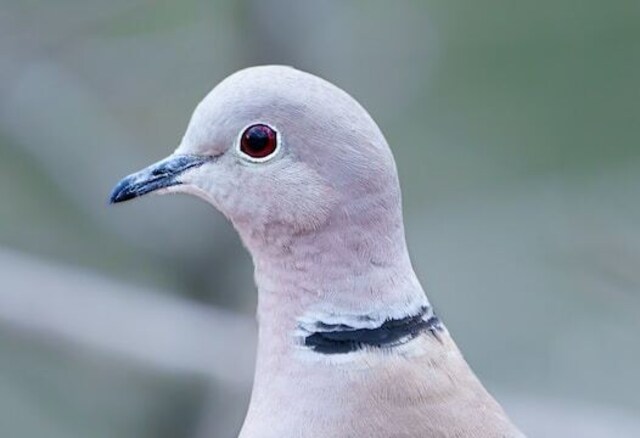
Conclusion
After exploring the topic of whether birds blink, it is clear that avian blinking behavior is a fascinating and complex subject. While birds do blink, their blinking patterns differ from those of humans.
Furthermore, bird blinking serves a variety of important functions, such as providing protection from environmental factors and moisturizing the eyes.
Summary of key points discussed in the article
One key point discussed in this article is that birds do indeed blink. However, their blinking behavior differs from that of humans due to differences in eye structure and function.
For example, while humans typically blink every few seconds to keep their eyes moistened and lubricated, birds have a nictitating membrane that helps protect and moisturize their eyes.
Another important point made in this article is that bird blinking behavior varies by species.
Certain species may blink more frequently or for longer periods than others, depending on environmental factors such as wind or light exposure.
Additionally, some species exhibit unique behaviors related to blinking – for example, owls are able to partially close one eye at a time.
This article highlights the importance of understanding bird behavior for conservation efforts.
By studying avian behavior patterns such as blinking frequency and duration, researchers can gain insight into how birds interact with their environment and adapt to changing conditions.
This knowledge can then be used to develop effective conservation strategies aimed at preserving bird populations and habitats.
Importance of understanding bird behavior for conservation efforts
Understanding avian behavior patterns is crucial for developing effective conservation strategies aimed at preserving endangered bird populations and habitats around the world.
By studying factors such as blinking frequency and duration as well as other behaviors including nesting habits or migration routes, researchers can gain valuable insights into how birds interact with their environment.
For example, studies have found links between declining bird populations across North America with human activity such as increased urbanization leading to habitat loss or agricultural practices that can harm bird populations.
By understanding what factors are contributing to declining bird populations and how they are impacting the species, researchers can start to develop effective conservation strategies such as habitat restoration and rigorous monitoring of bird populations.
Furthermore, studying bird behavior can help researchers identify key areas for conservation action.
For example, if a particular species is known to migrate through a certain region during a specific time of year, efforts can be made to protect those areas during that period of time in order to minimize disruption or damage from human activity.
Overall, understanding avian behavior patterns including blinking behavior is an important step towards promoting conservation efforts aimed at preserving vulnerable bird populations around the world.

References
Sources on Bird Anatomy and Eye Function
Understanding bird blinking behavior requires knowledge of avian anatomy and eye function. One useful resource is the book Anatomy of the Avian Eye by R. N. Singh, which provides a thorough overview of the structure and function of bird eyes.
Another source is a research paper by P.J. Fernández, et al., titled “Avian vision: a review of form and function with special consideration to birds of prey.”
This paper provides an in-depth discussion of the unique adaptations that enable birds to see with great clarity at long distances.
Research on Bird Blinking Behavior
To learn more about bird blinking behavior, there are many research papers available.
One study published in Birds: Evolutionary Biology journal found that some species of birds blink less frequently when they are in a state known as “vigilance,” where they are alert for predators or other threats.
Another study published in the Journal of Comparative Physiology A found that different species of birds have varying lengths and frequencies for their blinks, suggesting that blink behavior may be linked to specific ecological niches.
Bird Conservation Efforts
Understanding bird behavior is crucial for effective conservation efforts. The National Audubon Society offers resources for individuals interested in learning more about bird conservation, including information about volunteering opportunities and ways to support habitat restoration efforts.
Bird Watching Resources
For those interested in observing bird behavior firsthand, there are many resources available online and offline.
The Cornell Lab of Ornithology’s website provides comprehensive information on North American bird species, including audio recordings of their songs and calls.
The eBird website allows users to track their sightings and contribute data to ongoing citizen science projects.
The Future of Research on Bird Blinking Behavior
Although there is already a significant body of research on bird blinking behavior, there is still much to be learned.
Future studies could explore how bird blinking behavior varies in response to different environmental factors or how it may be linked to other aspects of bird behavior, such as foraging or social interactions.
Advances in technology may also enable researchers to study bird blinking behavior with greater precision and detail.
With continued research, we can deepen our understanding of these fascinating creatures and work towards better conservation efforts.
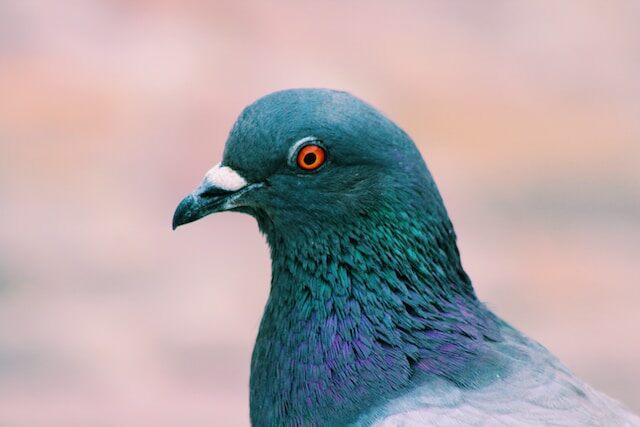
FAQs: Do Birds Blink?
Do birds blink their eyes?
Yes, birds do blink, but their blinking behavior is different from that of humans.
How often do birds blink?
Birds blink much faster than humans. Some species can blink up to five times per second.
Why do birds blink so frequently?
Birds blink frequently to keep their eyes moist, clear debris, and spread tear film across the surface of their eyes.
Can birds close their eyes completely when they sleep?
No, birds cannot close their eyes completely when they sleep due to their nictitating membrane, which remains partially open to protect their eyes while maintaining some vision.
What is a nictitating membrane?
A nictitating membrane is a translucent or transparent eyelid found in birds and some other animals. It acts as a protective barrier, moistens the eyes, and allows birds to blink without fully closing their eyes.
How does a bird’s nictitating membrane work?
The nictitating membrane moves horizontally or vertically across the bird’s eye, providing moisture, clearing debris, and protecting the eye without obstructing vision.
Can birds control the movement of their nictitating membrane?
Yes, birds have voluntary control over their nictitating membrane. They can quickly sweep it across the eye or hold it in a partially closed position depending on the situation.
Do all birds have a nictitating membrane?
Yes, all bird species possess a nictitating membrane. However, the visibility and prominence of the membrane may vary between species.
Can you see a bird’s nictitating membrane?
Sometimes, depending on the species and the angle of observation, it is possible to catch a glimpse of a bird’s nictitating membrane as it blinks or when the bird is in a relaxed state.
Are there any other animals with a nictitating membrane?
Yes, besides birds, some reptiles, mammals, and fish also possess a nictitating membrane, although its structure and function may vary among different species.

